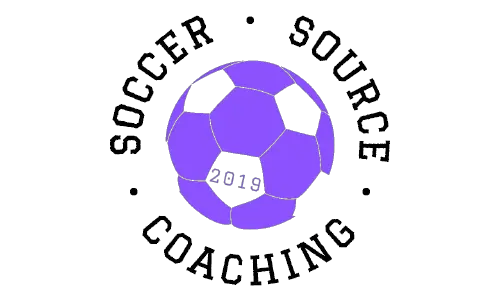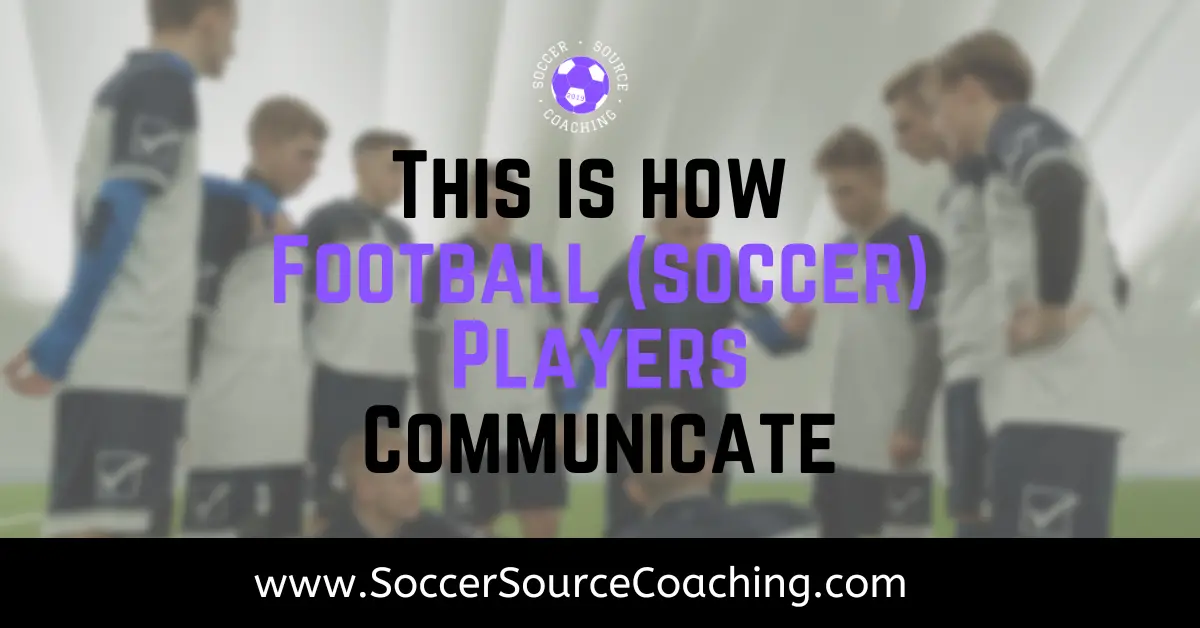Football (soccer), can arguably be the hardest game to communicate in due to the variety of languages spoken by players in the top professional teams.
However, communication in football is not just used for players to speak on a personal level it is also to convey tactics, messages, and strategies.
The success of a football team will largely depend on how well they communicate with each other on and off the pitch. This post will go over how football (soccer) players communicate with each other.
When you first think of communication you’ll probably think that words and noises make up the majority of how people communicate, right?
Incorrect!
A study by Albert Mehrabian ( a body language expert) found that words and noises only make up 45% of how people communicate with each other.
The majority of communication is actually nonverbal (55%).
Reference: How Much of Communication Is Nonverbal?
And this is true for how players in football communicate with each other too!
Below are the topics that the post will go over.
How players use verbal communication

The first-way football players communicate with each other is by using words and sounds.
Whether a player is calling for the ball in space or if a teammate is telling a player to turn when receiving the ball, this counts as verbal communication.
Verbal communication is a great way for players and coaches to get an immediate message or feedback across to the team.
However, the tricky thing with verbal communication for football players is that some words can get lost in translation.
Especially if the language spoken is not the first language the player has learned.
Verbal communication can even be easily misunderstood if you speak the language too!
Sometimes, the messages are unclear and interpreted differently by the players which can cause confusion.
This is on top of the time it takes to process the message as well!
Top teams will implement a common language that helps them streamline verbal communication throughout the team, whether the player is a native speaker of the language or a none native speaker.
It benefits everyone!
If you are interested, here is a post I made on what language players soccer players speak.
Common language in football (soccer) that players use to communicate
Common language is unique to every football team.
It can be a single word or a short phrase.
The purpose of common language is to streamline communication so that tactics can be quickly conveyed and understood by players for them to put into action.
An example of this would be the word ‘switch’
Instead of saying ‘get the ball to the other side of the pitch.’
The word ‘switch’ is a simple alternative that players can use that will paint an immediate picture in their heads of what they need to do.
The same message is able to get across in 1 word as opposed to 10.
Every football team has its own nuances of common language, as there are so many different words that mean the same thing.
The common language would also change depending on what language the coaches and players speak.
For a player to communicate successfully with their team and the tactics they use, they do not need to be fluent in the language.
They just need to understand the keywords and phrases that the soccer team uses.
How players use non-verbal communication

Non-verbal communication in football is any form of communication that does not involve words being spoken or noises being made, below are 4 different non-verbal communication methods with examples:
Hand signals
Hand signals are very common in soccer and are a really effective way for players to get on the same page as each other.
Especially when verbal communication cannot be heard due to either the surrounding noise or the distance between the players.
They are often used by players to point to the area or part of the body they would like to receive the ball.
They can also be used in set pieces, with different hand signals meaning a different set piece routine that has been practiced beforehand.
Although hand signals have their benefits they have some downsides as well.
Hand signals will sometimes get lost or not seen by the player on the ball.
The player on the ball may be rushed to make a quick decision and may gloss over the fine details of hand signals made by other players.
Hand signals are often not used on their own and are usually combined with verbal communication.
Below is a video explanation of how football players communicate with each other from corner kicks
Eye contact
Making eye contact with players is a subtle way of communicating without everyone knowing, which makes what you are doing incredibly hard to predict.
By making eye contact with a teammate, you are telling that player you are aware of their movements, positioning, and whether or not they want to receive the ball at that moment.
To keep the communication subtle players may also use smaller hand signals to help share their idea with the player on the ball so they are truly on the same page.
You will most likely see eye contact as a communication when players look to take a quick set piece.
Whether it be a goal-kick, corner-kick, or free-kick.
Eye contact as a form of communication is a lot less frequent in open play as players are constantly looking and scanning the area to make the best possible decision.
They may have the time on the ball they desire to make eye contact with their teammates
Body language
The body language of a player is the most common way players communicate with each other on the pitch.
It shows a player’s intentions with their body position and movement
The body language of a teammate will show the player on the ball:
- Whether or not they want to receive the ball
- If they would like the ball played into their feet or into the space
- Which part of the foot they would like to receive the ball
It will also give clues as to what decision they may make next, so teammates are able to move and support them on the ball.
Body language is also used to communicate how players a feeling emotionally.
For example, a player with their shoulders hunched over and head facing down might be lacking confidence or be disappointed with a previous play that went poorly.
By picking up on the players’ body language, teammates will be able to help emotionally support that player.
However, for body language to be an effective way for football players to communicate it must be seen.
Football players will often combine their body language with verbal communication to ensure that their teammates are really paying attention to them.
Diagrams
This type of communication is mostly used to help football coaches communicate with their football players.
Diagrams can help football players communicate by explaining tactics, roles, and responsibilities with simplified images and diagrams.
Images and pictures are a universal language, meaning this method can be great to help players who are not native speakers of the language used.
This is becoming an increasingly popular method for coaches to quickly and efficiently explain tactics to players who are coming on a substitute.
Although this is a great way to help players and coaches communicate off the pitch, this is not a realistic approach to communicate during open play on the pitch.
The final verdict on how football (soccer) players communicate with each other
Football players will communicate with each other using a combination of verbal and non-verbal communication.
When players communicate verbally they will try to use a common language that will help speed up how a message can be quickly converted into action.
Having a verbal common language within the team will help native speakers as well as non-native speakers of the language.
This is how footballers learn the language so quickly!
Typically players will use non-verbal communication to aid their verbal communication so that information can be passed more efficiently.
non-verbal communication methods will include:
- eye contact,
- hand signals
- body language
- Diagrams/graphics/images.
Communication is definitely a skill that can be improved through consistent training and practice.
Here are some of my favorite drills that I use to help improve communication with my players.
If you found this post on how footballer players communicate with each other helpful or know someone who would, then please share it with them!
Thank you,
Toby

